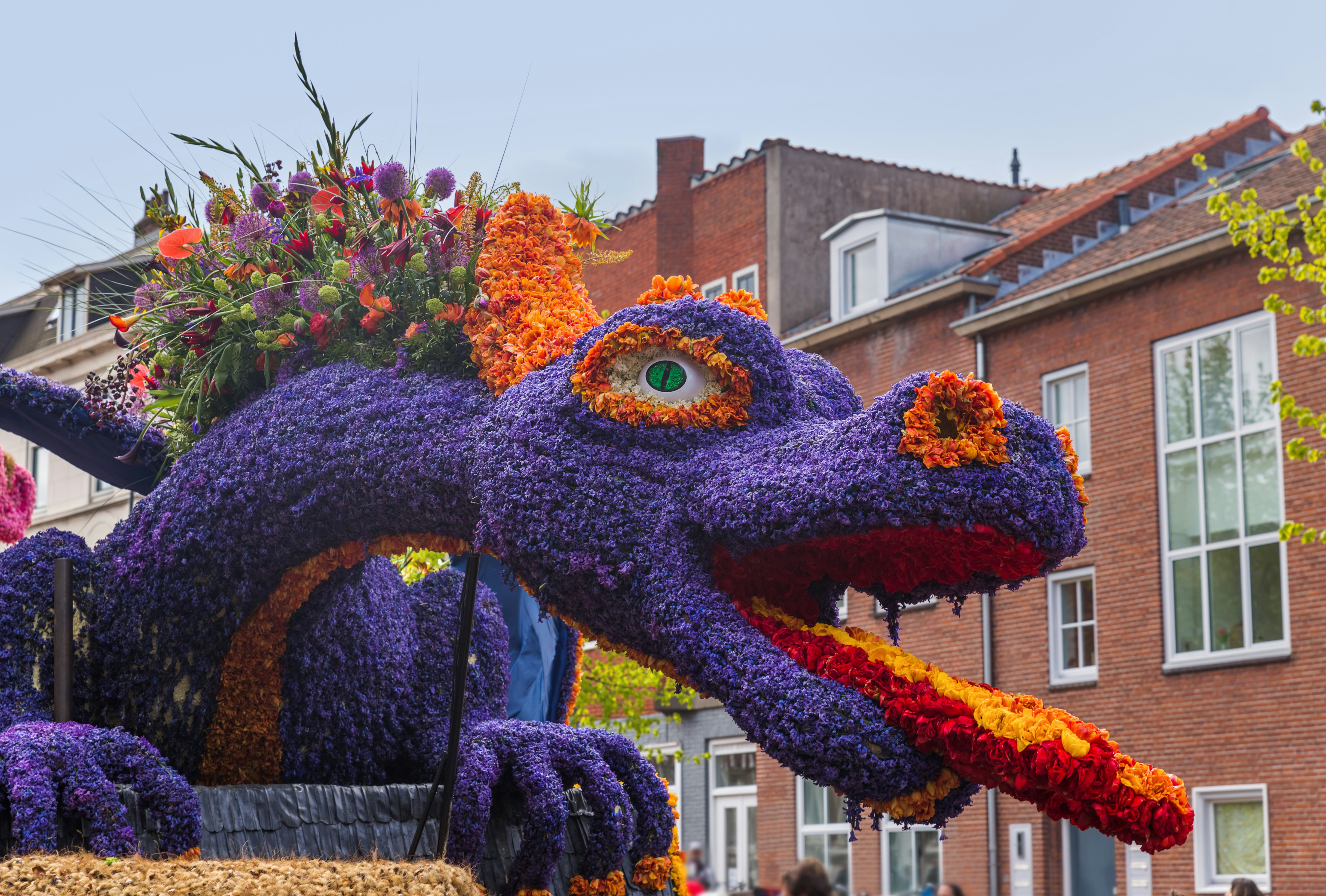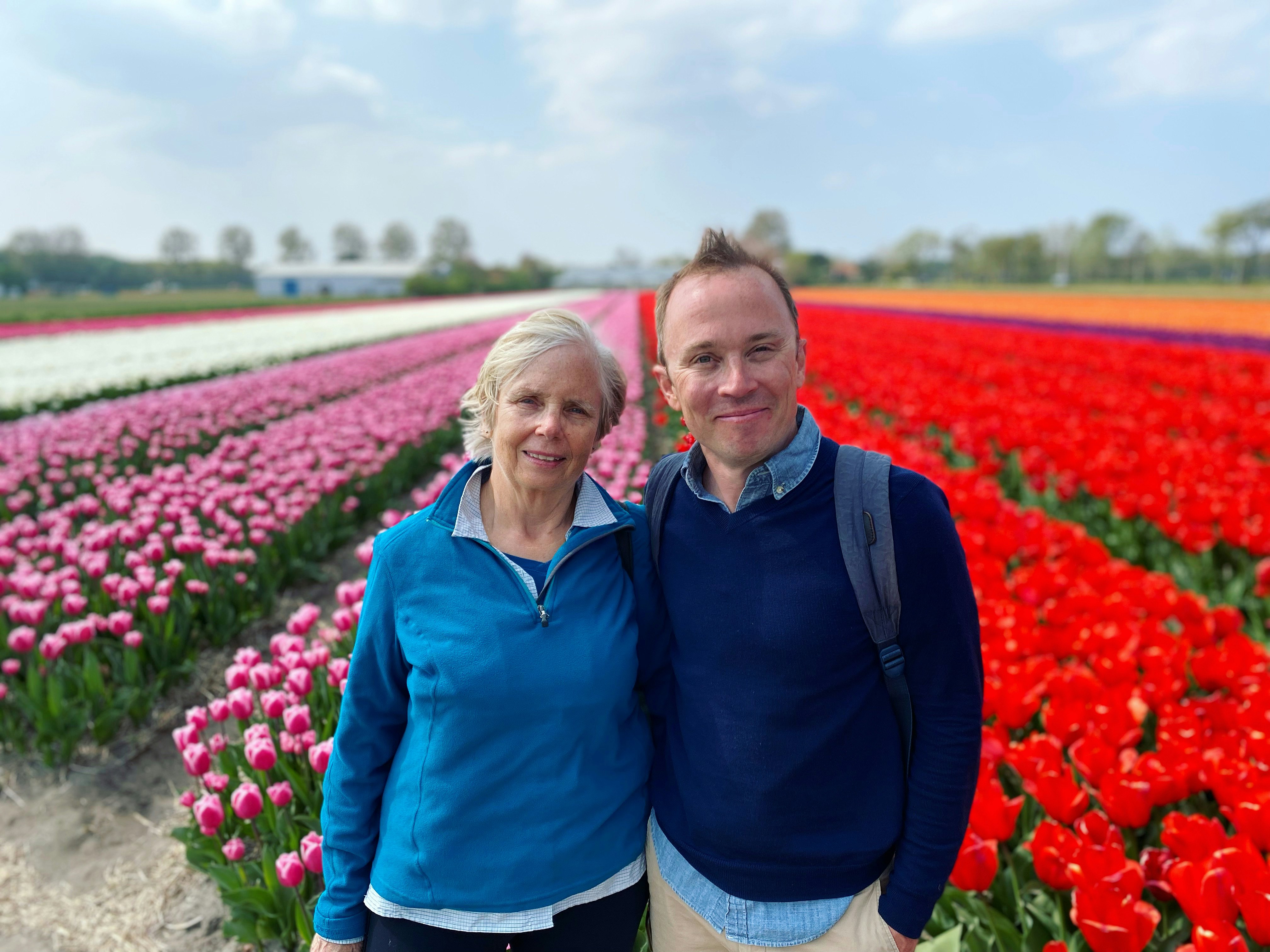
The 30 best countries, cities and regions to visit in 2025

Holland’s ultra-flat terrain boasts tulips as far as the eye can see in April © Pakin Songmor / Getty Images
Brian Healy on the best way to see the splendor of Holland’s tulips: on two wheels.
How could I say no to tulips?
My mother Joyce – an avid cyclist, gardener and aficionado of Dutch culture – had for years dreamed of a jaunt through the fields of South Holland’s Bollenstreek (“bulb region”) in April, when the entire country is in bloom.
We put together an independent itinerary to see the best of this compact region by bike. Four days, two nights each in two cities, à la carte rentals by the day. Lunches at villages along the way, with plenty of snacks in our backpacks for on-the-go refueling. And – most of all – lots and lots of biking, perhaps 20 miles per day. While my mother and I both stay relatively fit, we’re not intense athletes – yet neither of us was worried about covering some distance on Holland’s ultra-flat terrain.
I set off expecting an idyllic yet somewhat kitschy tour of tourist-friendly Holland, that storybook place filled with windmills and pigtailed maidens in wooden shoes. What I got was a surprisingly athletic few days of pedaling, a priceless bonding experience and the mind-clearing exhilaration that comes from extended time on a bicycle.
Oh, and did I mention the tulips? I saw a lot of those, too.

After testing our cycling chops during a few days on the streets of Amsterdam, we headed south on the 45-minute Intercity train ride (€12) to tulip country. From the windows of our double-decker carriage, we got a tantalizing glimpse of fields with rows of bright pink, orange, red and white forming almost kaleidoscopic patterns as the train zoomed by.
Our first destination: Leiden, a truly delightful city that has all the 17th-century buildings, glittering canals and atmospheric charm of the capital, without the throngs. (That is, if you don’t count the thousands of local university students who materialize for alfresco happy hour each night.) Without reserving ahead of time, we easily rented heavy bikes for two days by walking into a local cycling shop, then pedaled them around the small city to explore, run errands and do our best to pass for Dutch. As we continually pulled over to check Google Maps on our phones, we did not succeed.
A note about our kit: though my mother (who’s 30 years older than I am) takes her cycling much more seriously than I do, she left her high-tech gear at home. We stuck with civilian clothes and three-speed rentals for our trip, opting for solidity and style over sleekness. One arguably reckless way we tried to fit in? By forgoing helmets, which I didn’t see a single cyclist wearing our entire time in Holland.

The next morning, we set out from Leiden toward Lisse, 10 miles away, where we had tickets to see the famous Keukenhof Gardens. On dedicated, fully separated bike paths, we passed parks and suburban residential areas as we left town, before coming to a series of industrial warehouses and freeway onramps. This is tulip country? I thought, with trepidation.
And then I smelled something glorious.
Past a football-field-sized shed, I saw an expanse of yellow and gold, preceded by an intoxicating fragrance arriving on the wind: jonquils, probably hundreds of thousands of them. I pedaled faster to get closer, before dismounting to breathe in the aroma and watch the blooms bounce in the breeze. (I also noticed a slight burn in my thigh muscles – talk about a multisensory experience...) Beyond, further stretches of magenta, scarlet and cream unfolded in the distance.
As we pedaled onward, we pulled over every so often to stop in fields, walking between the raised linear beds of tulips, admiring how the tidy color-blocked strips of flowers formed harmonious patterns both close-up and from afar. (As the trip unfolded, it turned out I had a much bigger appetite for these stops than my mother. She indulged me nonetheless. Love you, mom.)
This was tulip country.

We had to lock our bikes at the farthest end of the Keukenhof parking lot, most visitors preferring faster travel there in cars and tour buses. When we got to the entrance of this painstakingly landscaped park, a floral fantasyland awaited. (We had reserved our timed tickets – €19.50 each – months in advance, as the gardens, a Dutch national treasure, are only open for a few short weeks each year.)
Keukenhof is a showcase for Holland’s tulip industry, an agricultural powerhouse. Here, the growers display some seven million bulbs of over 800 varieties of tulips, including spectacular specimens with multicolored blossoms and delicate fringed edges – as well as the alluring “Queen of the Night.” This dark-indigo beauty is perhaps the closest breeders have gotten toward a truly black tulip, an obsession for centuries.
Having seen the stars up close, we wanted to zoom back out a bit. So we fled the crowds and returned to the country roads and between-field paths (all paved) that led through and around the Bollenstreek, where it’s said the proximity of the sea and slightly sandy soil make for the best tulip-growing conditions in the world. To my surprise, many fields had tulips that had begun to shed their petals, producing beguiling flurries of what looked like confetti. I later learned that the Bollenstreek’s crops are grown not to be cut by their stems, but to be harvested for their bulbs, which are then exported around the world. Those tulips that are pushing up in your window box right about now? They might very well have originated here.
Since many fields in the area lay fallow, and since each farm peaked at a different moment over a six-week period, we relied heavily on the indispensable Flower Map, which updates its notation of fields currently in bloom daily. Mapping out a path from one cluster of blossoms to the next – sometimes backtracking, always looking side to side as we tootled along – gave our days the feel of a real-time scavenger hunt, which only heightened the excitement.
The biggest pleasure of our tour came during these in-between moments, where we didn’t care how we got from point A to point B. Riding alongside canals past fastidiously neat rows of plantings (these farmers are Dutch, after all) provided a dazzlingly colored example of linear perspective. Even when the weather turned gusty and we strained our legs to keep up our pace, we felt joy, as the wind blew across our helmet-less heads and rays of sun broke through the fast-moving clouds. We exchanged smiles with passing cyclists, who were of all skill levels and ages.
Tulip mania is for everyone, it seems.

The second-biggest pleasure might have been the Bloemencorso (Flower Parade), an annual extravaganza of grower-produced floats that makes its way across the length of the Bollenstreek over the course of one long afternoon – an event my mother had heard from friends was not to be missed. So after several more hours of exploring the fields (eager not to miss a minute of the spectacle, she had to gently guide me away from one photo op too many), we planted ourselves in tiny Hillegom to watch the proceedings. Awaiting the arrival of the parade, revelers thronged the village’s main drag, sipping beers and moving their bodies (sometimes, um, shakily) to ear-splitting pop tunes.
After police motorcycles cleared a path, the floats started rolling past: we saw horses made from purple hyacinth petals, an octopus of gold and burgundy patches, a dragon sprouting long-stemmed tulips from its sinewy back and many more original creations. In between them sashayed uniformed marching bands and countless volunteers in neon wigs and floral headdresses. People take this event seriously here.
After our two nights in Leiden, we had moved our base to the charming city of Haarlem (25 minutes north by train), where we spent two nights. The city is the terminus of the Bloemencorso, which made it easy for us to make a closer inspection of the floats, now parked throughout the town’s streets. It was also a delight to inspect the families marveling at the cartoon-like floral sculptures, and relive the magic of the parade through the children’s reactions.
Having pedaled 75 miles over four days and admired more tulips than most see in a lifetime, I gave my mom a congratulatory hug. She told me the trip had easily exceeded her expectations. I replied by suggesting we start recuperating by sitting down for a very long lunch.
From such moments, happy memories grow.

Trains depart frequently from Amsterdam Schiphol airport to Leiden (20 minutes) and Haarlem (30 minutes, via Amsterdam Centraal). We rented bikes in central Leiden at Budget Bike (€15 each per day), then at Rent a Bike Haarlem, conveniently close to the train station (€22 per day). During peak periods such as spring, demand can run high, so I’d recommend reserving ahead of time or getting as early a start as possible.